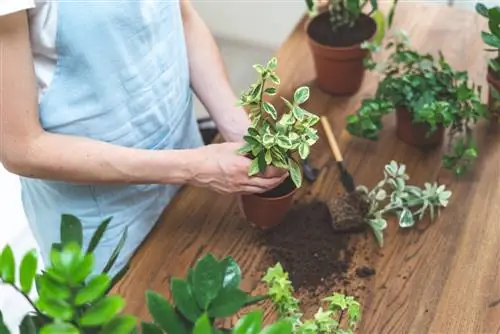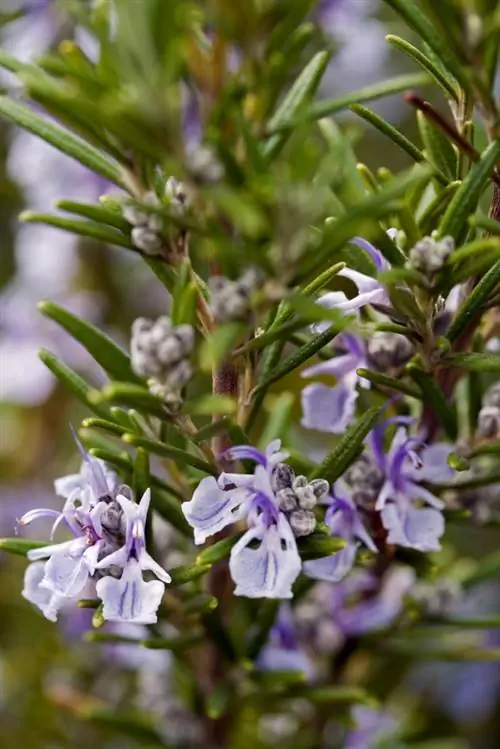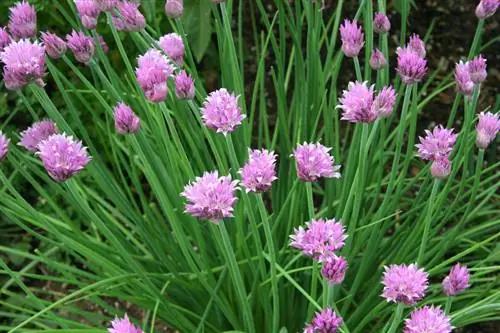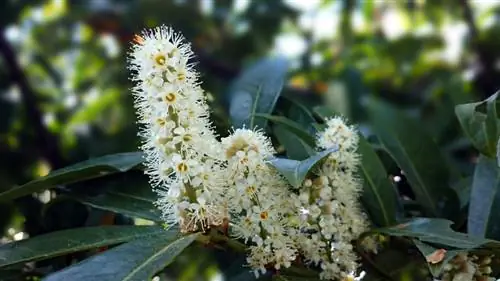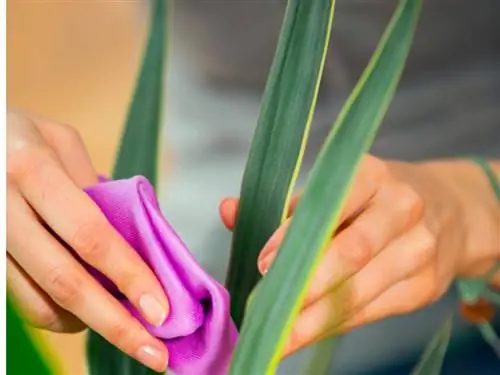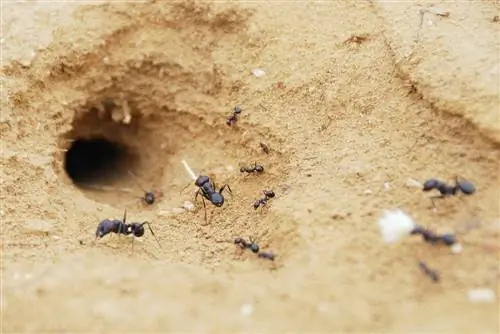- Author admin [email protected].
- Public 2023-12-16 16:46.
- Last modified 2025-01-23 11:22.
When watering you usually discover small white animals moving around in the potting soil. This is a pest infestation that must be combated. This is the only way to prevent it from spreading to other flower pots.

What are small white animals in flower pots and how do you fight them?
Small white animals in the flower pot can be larvae of fungus gnats, springtails, lily chickens or root mites. To combat them biologically, nettle decoction or baking soda can be used. In the case of massive infestation, repotting the plant is recommended.
What pests could this be?
Various pests like to lay their eggs in potting soil so that the later larvae can grow in good conditions, e.g. B.
- Larvae of fungus gnats that feed on plant roots
- Springtails that can jump like fleas
- white larvae of the lily chicken
- Root mites as root pests
If white animals are spotted, it can actually only be one of the pest species mentioned. For the benefit of the houseplants, the pests should definitely be combated. However, you can first try to drive the animals away using biological means. The remedies are effective, but usually require a longer period of action.
Various remedies against white creatures in the potting soil
Our grandfathers swore by the effectiveness of nettle decoction. To do this, boil nettles (about 1 kg) in 10 liters of water and leave them covered. If bubbles form in the brew, it can be sprayed. Since the nettle brew doesn't smell very good, the work is best done outside. The spraying should be repeated on several days.
An inexpensive remedy against the white larvae in potting soil is baking soda, a simple remedy that is available in almost every household. Sprinkle the powder on the potting soil and add a little water. The powder seeps into the soil and is eaten by the larvae, which then die. Treatment with baking soda should be repeated more often to achieve lasting results.
Repotting
If the pest infestation is massive, the only solution is to repot the plant. Proceed as follows:
- Take the plant out of the pot and remove as much soil as possible from the root ball.
- Wash the root under running water.
- Put the affected soil in a separate bag, close it and dispose of it in the trash.
- Clean the flower pot with strong lye and possibly alcohol.
- Prepare the pot again with drainage.
- Fill in high-quality potting soil and replant the flower.

